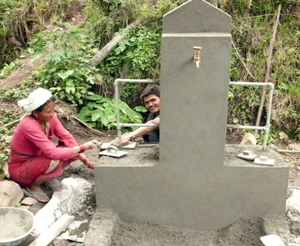Nepal has significant water resources, but more than a third of the population still do not have access to safe drinking water and more than half do not have access to basic sanitation.
According to the World Health Organisation's latest estimate, 94 per cent of Nepal's water-borne diseases such as diarrhoea and dysentery could be prevented with improved water, sanitation and hygiene services. This could save the lives of more than 13,000 children under five each year.
Australia is supporting water and sanitation services in Nepal through support of $5.2 million to the Nepal Water for Health program, through WaterAid Australia. In 2012, approximately 31,800 additional people from 46 communities across Nepal will be able to access safe water and sanitation services as a result of the program.
The Nepal Water for Health Program provides community outreach in sanitation and hygiene, in combination with the provision of water infrastructure for villagers. Spring water from nearby hills is pumped through holding tanks to water outlets in the village. Taps are provided to dwellings at a cost to the householder or to public water outlets in the village. Villagers own and manage the water infrastructure and must have a system to raise funds for ongoing maintenance, with fees collected by the local Village Development Committee. A local person is often trained in plumbing to ensure sustainability of the project. Together with provision of water infrastructure, villages are encouraged to aim for 'open defecation free' status; only around 20 per cent of Nepal's 4,000 Village Development Committees have achieved this status.
Access to clean water and sanitation in villages is changing the lives of many in Nepal. Building toilets for community and household use ensures that the water supply around the local area is not contaminated. This contributes to a better quality of life, including for those who are disabled. With a clean, reliable water supply, people no longer need to buy water for drinking and household use, freeing their household income up for other uses as well as ensuring better health outcomes for the community.

